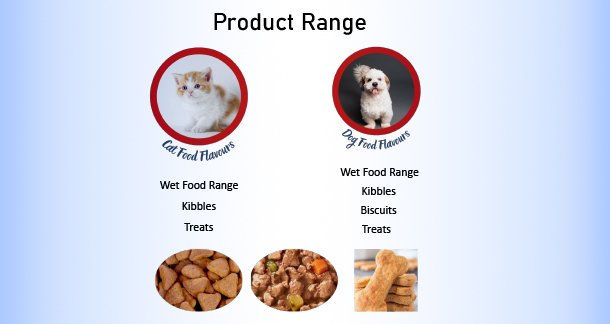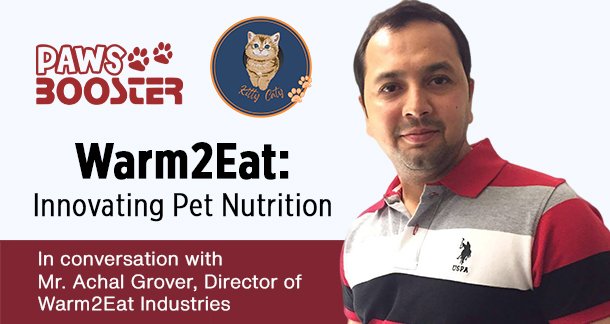In conversation with Mr. Achal Grover, Director of Warm2Eat Industries, he delves into his journey from being a pet parent to private label manufacturer, the challenges of ready-to-eat formulations, and the emerging trends he believes will shape the future of India’s pet food landscape.
Question– How has your trajectory been so far in the pet food space as a private label company, and what are the lessons you have learned?
It has been a beautiful journey so far, starting from just being a pet parent and a consumer, to now doing white labeling for about seven to eight brands. I have come a long way from the initial phase of working out recipes for wet food, adopting technology, and trying to maintain at least one and a half to two years of shelf life on a product that has no preservatives, no additives, and does not require refrigeration. A few lessons I have learned over these years: You should know your ingredients very well, and good quality at a reasonable price will always make you win.
Question- What are some of the in-house facilities you have for manufacturing pet food and treats?
Our facility is spread over 9,000 square feet. It includes a well-equipped kitchen, dedicated storage rooms for raw materials and finished products, a cooking area, a processing area, a separate packing area, and even an in-house lab for testing products. Currently, we process about 700 kgs in one shift, and we believe automation will take us leaps forward.
Question– What are some of the concerns brand owners usually have when they come to you for manufacturing pet food?
The demand for pet food has surged, driven by increasing pet ownership and the humanization of pets. This trend has created a lot of opportunities for many brands. The best part is that quite a few pet parents are coming forward and trying to productionize their own recipes, eventually leading to better food and nourishment for our pets.
The best thing today is that these pet parents, who are also brand owners, want to make a good product. They’re trying to balance the price because eventually they have to sell the product too. I really appreciate these kinds of brand owners, pet parents who genuinely want to contribute to a pet’s life.
Question– What are the challenges you face when selling ready-to-eat wet pet food, given the apprehension among some pet parents?
The biggest challenge we face while selling ready-to-eat wet pet food is that people sometimes refuse to understand how advanced technology has become. Today, you can have foods without preservatives, chemicals, or additives, that don’t need refrigeration or dehydration, and still have a shelf life of two years. For example, our ready-to-eat foods are purely without preservatives or chemicals. They don’t need refrigeration and can be stored on a shelf just like a biscuit or chips pack—yet they still have a two-year shelf life.

Question– What inspired you to bring back kibble (KS) into the market, and how do you think it benefits pet parents?
Since I do a lot of research on the data, it shows that the market share of kibble is many times higher than that of wet food. We’ve started producing kibble too because our customer base is the same. For the brands we make wet, ready-to-eat pet food for, there is also a demand for kibble. Quite a few popular brands, I wouldn’t name them, get their product made in Thailand without setting any benchmark for raw materials. Their only deciding factor is price. They flood the market with heavy publicity budgets, creating an image in the customer’s mind—but the product rarely suffices the nutritional requirement of the pet.
The recipes we’ve formulated for kibble proudly revolve around a balanced diet, not price. Pet parents today are educated and exposed, they understand the difference between a good product and a bad one. They notice changes in their pet after switching diets, be it increased activity or a shinier coat. That helps them value the impact of good nutrition.
Question- What trends do you foresee for the pet food market in 2025?
Though it is difficult to predict exactly, I estimate a few prominent trends will definitely catch up.
First, wet, ready-to-eat food, its quantity and demand are bound to increase. Second, vegan foods for both dogs and cats will gain momentum. Lastly, customized diets will become more mainstream. I’m already part of several online pet parenting communities and am always happy to share knowledge. I’ve had people approach me to develop gluten-free diets or pure veg diets,and I love doing that.
As a company, we offer different products that cater to different breeds, as every breed has slightly different requirements. But most important is a balanced diet. When we formulate recipes, we don’t just focus on proteins, fats, or carbs, we look at all essential nutrients. For instance, magnesium deficiency in dogs can cause trembling or irregular heartbeats, so we ensure our recipes are well-rounded. We test all products in-house and then through external labs before final rollout.

